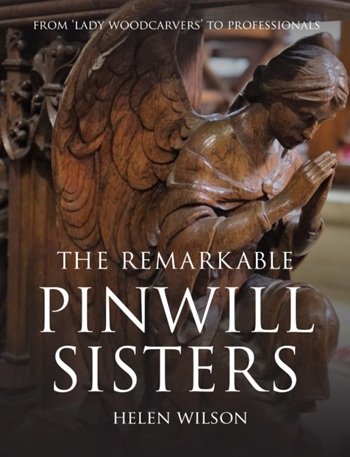International Organisation for Standardisation ISO
Contents |
[edit] Introduction
The International Organisation for Standardisation (ISO) is an independent organisation responsible for the production of voluntary international standards. ISO have 165 member countries with a Central Secretariat based in Geneva. The name ISO is derived from the Greek ‘isos’ which means equal.
[edit] History
ISO was formed in 1947 with 67 technical expert groups and in 1949 moved into offices in Geneva with 5 members of staff. The first standard was produced in 1951, ISO/R 1:1951 Standard reference temperature for industrial length measurements.
[edit] Members
There are over 165 members of ISO with one member representing each country. Members are the standards organisations within their country, it is not possible for an individual or a company to become a member.
ISO offers three different levels of membership:
- Full members (or member bodies) – have powers to influence the development of standards and can sell ISO standards nationally.
- Correspondent members – observe the development of standards and can sell ISO standards nationally.
- Subscriber members – are kept informed about the development of standards but cannot participate and do not sell standards nationally.
[edit] Documents
The main products produced by ISO are the international standards and over 19,500 standards have been produced covering a wide variety of industries. Technical reports, technical specifications and other guides are also produced by ISO.
The standards are documents that provide requirements, guidance, specifications or characteristics that are used to ensure consistency of materials, products, services and processes.
Examples of the standards that have been produced include:
- ISO 9000 – Quality Management.
- ISO 14000 – Environmental Management.
- ISO 31000 – Risk Management.
- ISO 20121 – Sustainable events.
The standards provide consumers with confidence that they are reliable, safe and of good quality. They can assist governments when formulating policies and regulations, and businesses can be assisted in ensuring they operate in an efficient and productive manner.
[edit] Partners
ISO work alongside the International Electrotechnical Commission (IEC) and International Telecommunication Union (ITU). The three organisations joined to form the World Standards Cooperation to enhance the standards systems of the separate groups.
[edit] Funding
The members of ISO pay a subscription and additional revenue is generated for the organisation through the sale of the standards.
[edit] ISO Strategic plan 2011 – 2015
ISO have produced a strategic plan for 2011 to 2015 and the global vision for the organisation is:
“To be the world’s leading provider of high quality, globally relevant International Standards through its members and stakeholders”.
[edit] Related articles on Designing Buildings
- Accreditation.
- ASTM International.
- British Standards Institution BSI.
- BS 476.
- ISO 50001 Energy Management.
- BS ISO 10845.
- BS ISO 45003 Psychological health and safety at work - managing psychosocial risks.
- ISO 10845.
- ISO 9000.
- ISO 9001.
- ISO 14001.
- ISO 14024.
- ISO 22341:2021.
- ISO 23234 and ISO 21542 security and accessibility standards.
- ISO 30401 Knowledge management systems.
- ISO 30415.
- ISO/PAS 45005 Guidance for working safely during COVID-19.
- ISO/TC 211 Geographic information/Geomatics.
- British Board of Agrément.
- CE mark.
- Kitemark.
- Publicly available specification.
- Structural engineering codes.
- Third party accreditation.
[edit] External references
Featured articles and news
Skills England publishes Sector skills needs assessments
Priority areas relating to the built environment highlighted and described in brief.
BSRIA HVAC Market Watch - May 2025 Edition
Heat Pump Market Outlook: Policy, Performance & Refrigerant Trends for 2025–2028.
Committing to EDI in construction with CIOB
Built Environment professional bodies deepen commitment to EDI with two new signatories: CIAT and CICES.
Government Grenfell progress report at a glance
Line by line recomendation overview, with links to more details.
An engaging and lively review of his professional life.
Sustainable heating for listed buildings
A problem that needs to be approached intelligently.
50th Golden anniversary ECA Edmundson apprentice award
Deadline for entries has been extended to Friday 27 June, so don't miss out!
CIAT at the London Festival of Architecture
Designing for Everyone: Breaking Barriers in Inclusive Architecture.
Mixed reactions to apprenticeship and skills reform 2025
A 'welcome shift' for some and a 'backwards step' for others.
Licensing construction in the UK
As the latest report and proposal to licence builders reaches Parliament.
Building Safety Alliance golden thread guidance
Extensive excel checklist of information with guidance document freely accessible.
Fair Payment Code and other payment initiatives
For fair and late payments, need to work together to add value.
Pre-planning delivery programmes and delay penalties
Proposed for housebuilders in government reform: Speeding Up Build Out.
High street health: converting a building for healthcare uses
The benefits of health centres acting as new anchor sites in the high street.
The Remarkable Pinwill Sisters: from ‘lady woodcarvers’ to professionals. Book review.
Skills gap and investment returns on apprenticeships
ECA welcomes new reports from JTL Training and The Electrotechnical Skills Partnership.
Committee report criticises UK retrofit schemes
CIOB responds to UK’s Energy Security and Net Zero Committee report.























